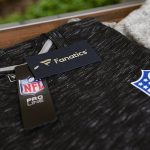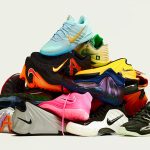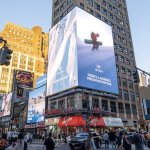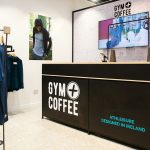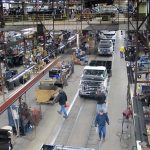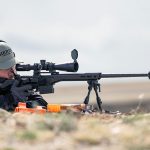While performance bikes continue to evolve year after year, shaving grams and tweaking suspensions and ride quality, one category made a giant leap at Interbike last year, and the industry may be feeling its effects for seasons to come. The overriding theme in Las Vegas last year was the Chopper. Everyone had one, and those who didnt wanted one. Even though Pacific Cycle/Schwinn was not the first company to create this category, they were the first to bring it to the mass market and the company sold over 500,000 units of their Stingray last year.
However, since Christmas Pacific Cycle has been seeing sales of the Stingray slow down, and the company is already looking at the next products in the pipeline to take over at the front of the pace-line. Most in the industry would agree that the chopper was a short-lived fad, but this year there remain some residual effects. The popularity of the chopper actually created a new category for independent bike dealers the lifestyle bike. The category tells more of a fashion story than a performance story, and bike manufacturers, both large and small, are jumping on-board.
IBDs have always carried cruisers, but the category seems to have evolved away from a family-oriented beach rental bike to a much more fashion-forward look. While the IBD is the place most people think of for cutting edge bike technology, it is not the usual place to look for anything fashion-forward. Regardless, this preconception seems to be changing and many dealers are capitalizing on the trend and the manufacturers are responding.
Last spring, Giant Bicycles launched their Mode line of bicycles. The company says this means these bikes arent just a “Mode” of transportation. The line includes womens specific bikes featuring real-wood panels, a wood rear trunk rack, and embroidered cell-phone holders.
“When we design bikes, a lot of the time we design them for people who are already riding bikes,” said Dean Bradley, senior product designer at Giant. “Our idea with these cruisers was to create something that was not intimidating and had a sense of style.”
Bradley also said that Giant jumped on board with the Chopper trend early, but also saw how short-lived it would be. However, the trend did help him understand a potential market. “The lesson that I learned was that people can come into an IBD and actually make an emotional buy a purchase that wasnt based on tech at all. That was something we hadnt seen before,” he said. “Sometimes, the customer just wants to buy a red bike.”
Trek is also offering some re-designed cruisers this year and is looking at this niche in a different way. This year the company has seven different models that address the lifestyle category, including a “hot rod culture” bike.
While the large bike manufacturers are launching new models and new product lines, smaller companies who have a core grassroots following are pushing the envelope of design even further. Nirve Sports has taken its own route with lifestyle bikes by signing a series of licensing deals with pop-culture icons like Hello Kitty, John Deere, and even Paul Frank.
Cycling apparel companies are clearly pleased with the move to more lifestyle aesthetics. Outdoor and SnowSports specialty retailers have created large profit centers in their stores through authentic lifestyle apparel that can be worn on the street as well as in the mountains. Most IBDs still look at apparel as an add-on to a bike sale, but there is also potential to sell product that allows customers to say I am a biker when they are not on a bike.
Tim Parr recently re-launched Swobo, an apparel brand that has been on a spiritual hiatus for the past two years. The brand was originally founded eight years ago as a collaboration with Rob Roskopp, owner of Santa Cruz Bicycles, but the company remains independent of Santa Cruz in spite of the shared owner. The product line will be half technical bike wear and half lifestyle apparel. Swobo has inked a deal with the creators of MAPP Merino, a unique approach which manages the entire supply chain in order to develop advanced merino technologies. This should help the company create technical and casual apparel that still performs. “We're committed to telling the urban, non-technical/lifestyle part of our story, as much as we are the technical innovation. Hell, its been what were all about since the beginning ” said Parr. “95% of the market sells athleticism, but for an apparel company to actually capture the cycling culture, generally speaking it hasnt been done.”
There is a clear shift towards more bike lifestyle apparel among many of the bigger players as well. Pearl Izumi has been offering some more fashion-forward pieces built with performance fabrics. The company is placing some additional focus on this segment going forward. Geoff Schaffer, public relations representative for Pearl Izumi told BOSS, “I think you saw this starting with our womens apparel a couple of seasons ago. It used to be modeled after our mens, but we redesigned it with more fashion in mind,” he said. “The segment definitely interests us and we see it migrating onto the cycling trails. In the past, with cycling apparel you couldnt get off the bike and go into a coffee shop and feel comfortable. We see it moving away from that look.”
One area that can drive sales in this category is the growing hybridization between outdoor and bicycle shops. Large chains, like REI, continue to expand their bike business year after year, while at the same time expanding their lifestyle apparel department, and some brands are successfully making the cross-over. If the evolution of Outdoor and SnowSports retailers towards more lifestyle apparel is any indication, then there is some potential for both retailers and manufacturers to capitalize on this category on the bike side as well.

